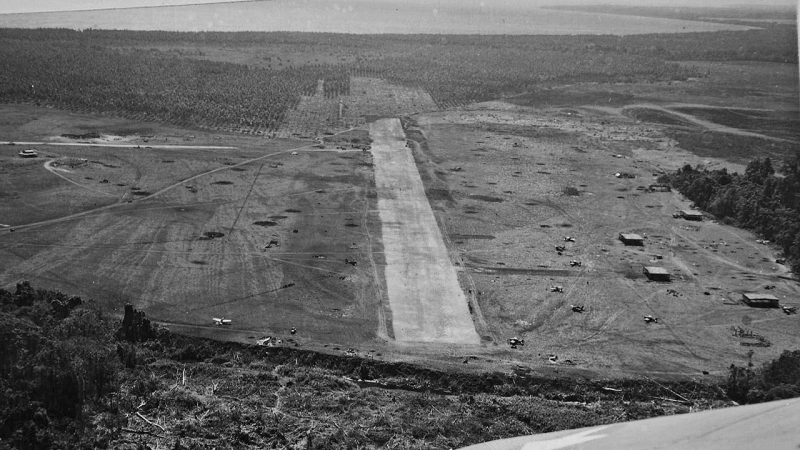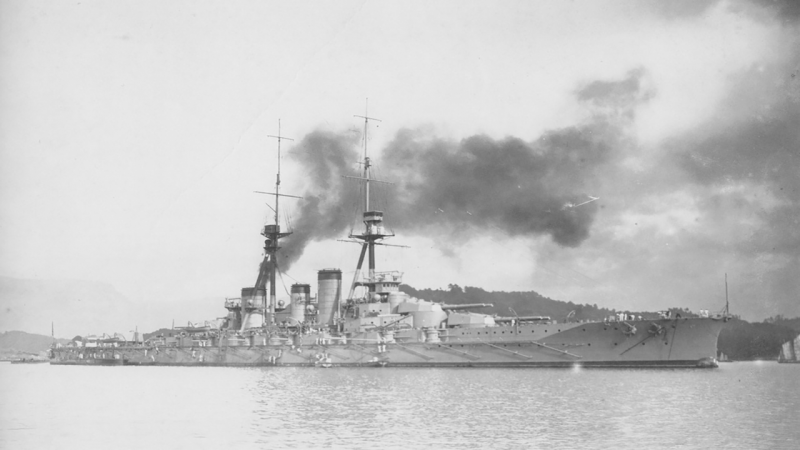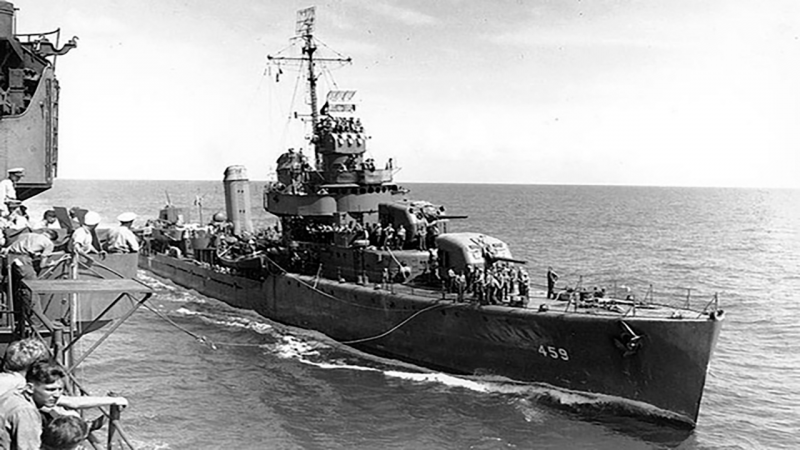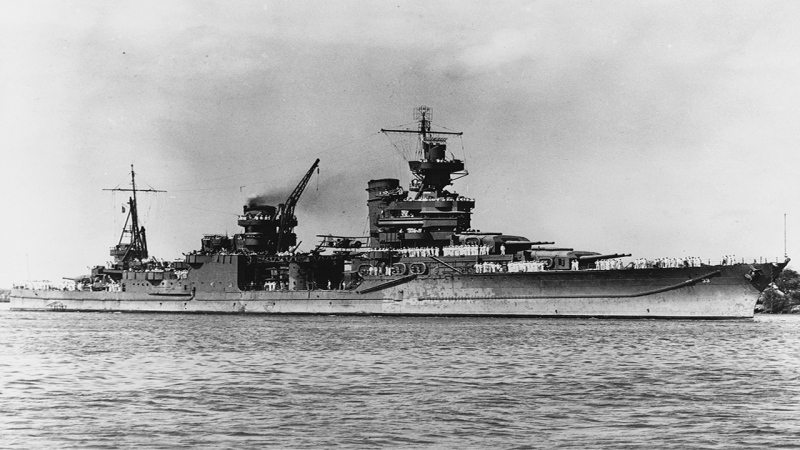Bloody night of Friday the thirteenth. First battle of the naval battle of Guadalcanal
The battle for the island of Guadalcanal, which was of great strategic importance to both the United States and Japan, began on August 7, 1942. Fierce battles were fought on land, at sea and in the air. The Japanese airfield under construction was captured after a swift attack by the American Marine Corps. The Japanese could not ignore this circumstance.
Two days later, on August 9, the American fleet was defeated in a battle off Savo Island, but Admiral Mikawa did not attack the transport ships. The decision turned out to be erroneous, since it allowed the American landing force to gain a foothold and complete the captured airfield, which was named Henderson Field. The first dive bombers and fighters were delivered on 20 August, and American forces on Guadalcanal received air cover and the ability to air strikes against the naval supply routes of the Japanese group on the island.
Japanese reinforcements were delivered by destroyers to Guadalcanal at night. These operations were called the "Tokyo Express" by the allies. Also, the Imperial Navy, using large forces, fired several shells at the recently completed airfield. On October 14, the Japanese battleships Kongo and Haruna received serious fire damage from the fuel depots, the runway, as well as aircraft on the ground. Successful actions to disable the airfield prompted the Japanese command to repeat the operation, and about a month later, a strike force was created, the attack of which was scheduled for the night of November 12-13.
At the disposal of Vice Admiral Hiroaki Abe, who commanded the Japanese squadron, were the battleships Hiei and Kirishima, the light cruiser Nagara, as well as 11 destroyers (Amatsukaze, Teruzuki, Akatsuki, Inazuma, Ikazuchi, Asagumo, Murasame, Samidare, Yudachi, Yudachi, Harameikaze). After a night of shelling, transports with 7 soldiers were to arrive during the day.
After analyzing the intelligence about the impending operation, the American command decided to prevent the Japanese from landing on the island. This task fell on the shoulders of Rear Admiral Daniel Callaghan. He commanded two heavy cruisers, San Francisco and Portland, three light cruisers (Helena, Juneau, and Atlanta), and eight destroyers (Aaron Ward, Barton, Monssen, Fletcher, Cushing, Laffey, Sterett, O'Bannon).
The meeting of the two opposing squadrons took place at about two o'clock in the morning on November 13 in the Savo Strait. At 01:41, destroyer Cushing visually spotted two Japanese destroyers and gave a radio alert. The commanders of the American ships received the order to open fire at 01:45.
The Japanese, in turn, also discovered the enemy, and the light cruiser Atlanta, when hit by fire, received multiple hits from shells, as well as a torpedo that hit the engine room. In addition, the already damaged Atlanta was mistakenly fired upon from San Francisco, killing Rear Admiral Norman Scott.
The formation of ships flying American flags disintegrated. After passing six meters from the enemy battleship Hiei, destroyer Laffey fired at him with all her guns, even anti-aircraft guns. As a result, Vice Admiral Abe was wounded and the chief of staff was killed. Meanwhile, Japanese battleship fire knocked out the heavy cruiser San Francisco, killing squadron commander Callahan. The ship itself was later attacked by the destroyer Amatsukaze, whose torpedoes, however, were not cocked due to the short launch distance.
The heavy cruiser Portland was much more fortunate, and she pulled out of the battle after being hit by a torpedo from one of the Japanese destroyers, but managed to fire several volleys at Admiral Abe's flagship, the battleship Hiei. During the attack on the battleship, Laffey was incapacitated by two 356-mm main shells, losing speed. Then he was hit by a torpedo salvo from the cruiser Nagara and two destroyers, "caught" the torpedo in the stern, exploded and quickly sank.
The destroyer Barton, having received two torpedoes from her "colleague" Amatsukaze, sank before she even had time to engage in battle. At the same time, destroyers Aaron Ward and Sterett engaged in crossfire at Yudachi. The crew of the Japanese destroyer left the ship at 04:30 due to the failure of the power plant. The actions of the American destroyers did not go unpunished by the battleship Kirishima and the destroyer Teruzuki. The Kirishima salvoes inflicted heavy damage on Aaron Ward, Teruzuki attacked Sterett with equal success, after which the Americans withdrew from the battle. The active phase of the battle ended at 02:16, the order to withdraw was given to Abe's battleships at 2:02. The Americans received the same order from the commander of the light cruiser Helena, as he was the most senior officer to survive in the battle, gathered the survivors and left the battlefield at 26:XNUMX.
At 08:15, Admiral Abe moved to Yukikaze, leaving Hiei. The battleship damaged in battle was attacked from the air and by the evening of November 13 was sunk by the Japanese. The abandoned Yudachi was also sunk, but this time by the fire of the cruiser Portland. By the evening of the same November 13, the American cruiser Atlanta was towed by the Americans to the coast of the island and sunk. Juneau was sunk by the Japanese submarine I-26. Of the entire crew of the cruiser, only 10 people were rescued two days later. The rest of the survivors were simply eaten by sharks.
In the battle that took place, the Imperial Navy lost two destroyers and one battleship. The US Navy lost four destroyers and two light cruisers. The first battle, according to various estimates, claimed the lives of 1 American sailors and from 439 to 550 Japanese sailors. Another major battle - the second in the naval battle of Guadalcanal - took place on the night of November 800-14. The Americans were still able to thwart the enemy's plans, despite heavy losses. fleet... And less than three months later, the Japanese were forced to retreat from the island.
Interestingly, one of the American destroyers was named after the five Sullivan brothers who died on November 13, 1942 on the Juneau cruiser. Today it is preserved as a museum ship and stands in the city of Buffalo. Touch stories USS The Sullivans by watching a documentary from Wargaming.




Information